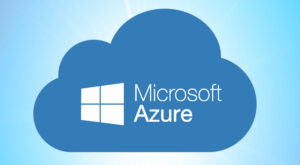
Microsoft ADO (ActiveX Data Objects) is at the forefront of data access technology. ADO is a fundamental component of Microsoft’s data access strategy, providing developers with the tools and libraries necessary to interact with databases and other data sources. This article explores the role of Microsoft ADO and its impact on data-driven applications.
The Evolution of ADO
ActiveX Data Objects (ADO) had its roots in the mid-1990s but gained significant prominence by the year 2004. ADO is part of the Microsoft Data Access Components (MDAC), a suite of technologies that facilitated data access for Windows applications. It is a natural successor to earlier data access technologies like ODBC (Open Database Connectivity) and DAO (Data Access Objects).
Key Features of Microsoft ADO
- Unified Data Access: ADO offered a unified model for accessing data from various sources, including relational databases like SQL Server, Oracle, and Access, as well as non-relational sources like Excel spreadsheets and text files.
- Component-Based Model: ADO is designed as a component-based model, allowing developers to interact with data through a set of COM (Component Object Model) components. This made it accessible to various programming languages, including Visual Basic, C++, and .NET languages.
- Efficient Data Retrieval: ADO provided efficient data retrieval through recordset objects, enabling developers to fetch and manipulate data with ease.
- Support for Disconnected Data: ADO introduced the concept of disconnected recordsets, which allowed developers to work with data in a disconnected mode and then synchronize changes back to the database.
- Data Binding: ADO supported data binding, enabling developers to bind data from ADO recordsets directly to user interface controls, simplifying the development of data-driven applications.
- Security Features: ADO included security features, such as authentication and encryption, ensuring that data access is secure and protected.
Applications of ADO
- Web Applications: ADO is instrumental in the development of data-driven web applications. It facilitated the retrieval and manipulation of data from databases to generate dynamic web content.
- Windows Applications: ADO is widely used in Windows desktop applications, including business software, reporting tools, and more. Developers can build applications that interacted with various data sources seamlessly.
- Database Management: ADO is an essential tool for database administrators and developers to manage and maintain database systems. It allowed for efficient querying and data manipulation.
- Data Integration: ADO played a vital role in data integration scenarios, enabling data to be extracted from multiple sources, transformed, and loaded into data warehouses.
Impact and Legacy
In 2004, Microsoft ADO is a pivotal technology in the world of data access and database management. It allowed developers to create powerful, data-driven applications that can interact with a wide variety of data sources. The adoption of ADO revolutionized data access, making it more efficient and accessible to developers working on Windows-based applications.



